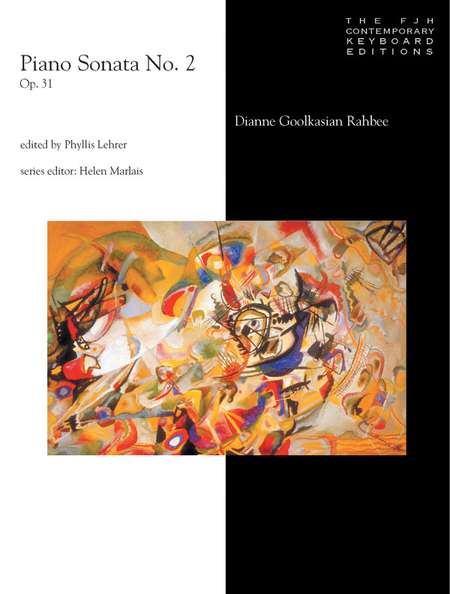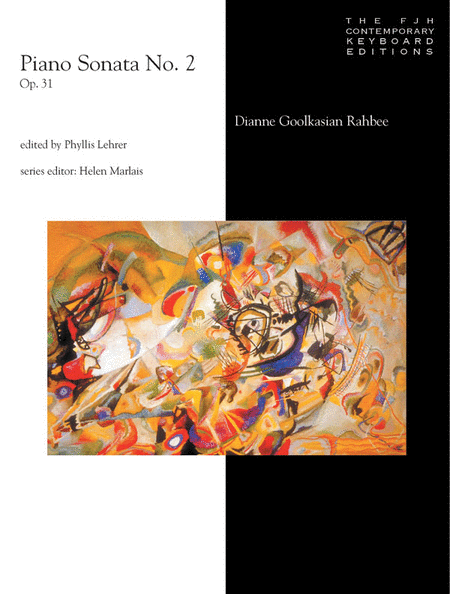Piano Sonata No. 2, Op. 31
-
Ships in 1 to 2 weeks
Details
Description
SKU: AP.98-J1013
Composed by Dianne Goolkasian Rahbee and Dianne Goolkasian Rahbee. Edited by Helen Marlais and Phyllis Lehrer. Masterworks; Piano Collection. The FJH Contemporary Keyboard Editions. Contemporary; Masterwork. Book. The FJH Music Company Inc #98-J1013. Published by The FJH Music Company Inc (AP.98-J1013).ISBN 9781569394861. UPC: 674398218493. English.
Rahbee's Piano Sonata No. 2 is an appealing piece in the contemporary genre. Its wide-ranging expressive array is filled with fervor. The sonata's untraditional tonalities allow the advanced student to experience a broader sense of musical expression. The first movement is rhapsodic in nature, the second is a playful scherzando, the third is warm and emotionally expressive, and the last movement is exciting.
About FJH Contemporary Keyboard Editions
The FJH Contemporary Keyboard Editions is a series that focuses on the best contemporary music for keyboard of the late 20th and early 21st centuries. These collected works by some of today's leading art-music composers will expand a student's concept of rhythm, harmony, sound, and texture. While the composers invited to write for this series use a colorful palette of contemporary techniques and textures, they were selected for their strong musical voices, which ensure that the ultimate goal of musical communication is never lost.
Too often, both students and teachers get discouraged with contemporary compositions because of their avant-garde sound. This series addresses that concern by providing excellent music which is both contemporary and intuitively musical. Contemporary performance practices such as depressing keys silently, cluster sounds, pedal effects, knocking on the keyboard, contemporary harmonies, jazz idioms, bitonality, modes, mixed and changing meters, and 12-tone techniques challenge the student to listen for new rhythmic gestures and tonal colors and expand their interpretive capacity.
While expanding students' horizons, this series helps to confirm and reinforce the musical and technical concepts they are learning in their other repertoire. The natural musicality present in each of these pieces demands the same kind of careful attention that we expect from the standard canon of repertoire.
This series is carefully leveled into the following categories: elementary, intermediate, early advanced, and advanced. Each of the works has been selected for its artistic as well as its pedagogical merit.


 Share
Share